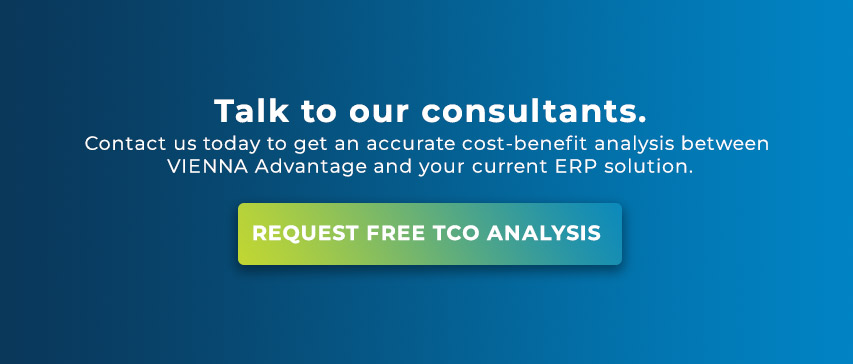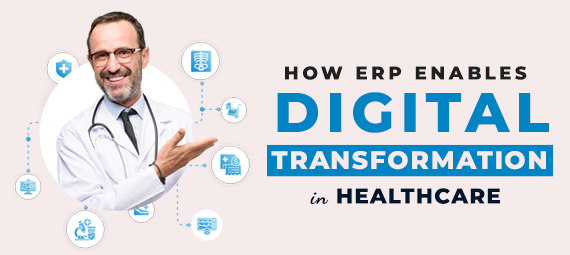The pandemic has, in several ways, stress-tested the healthcare sector. Many healthcare institutions were overwhelmed by the sheer scale of distress on their staff and infrastructure. Institutions that were able to support patients in such difficult times had one thing in common – they all invested significantly in digital transformation. Equipping their medical and administrative staff with the right digital tools, these institutions were able to support their communities during their most difficult times.
Let us examine in detail the key characteristics of digital transformation in healthcare and how are medical institutions taking a fresh perspective with the disruption that the pandemic has brought to their doorsteps.
Digital Transformation in Healthcare with Patient-centric Application
The patient journey generally starts from the front desk check-in and goes till the posting of the final billed amount in the appropriate General Ledger account. At every point in between, there are several activities ranging from clinical to diagnostics that a typical patient may go through. For healthcare institutions to ensure the highest levels of service, they would be well served to capture patient feedback at every stage and incorporate a rigorous feedback loop.
Similarly, clinical and administrative staff can use their equivalent applications on a suitable device and either input or access patient data in the best contextual manner possible. For all these to occur seamlessly, a robust, dedicated ERP application needs to form the digital core, while appropriate lightweight mobile-device based applications can support the end-to-end patient experience. While nimble, context-aware mobile applications can help capture and input contextual data. But, the true benefits of these applications can only be realized by ingesting this data in a centralized ERP, where the patient is a focal point of all interactions.
Trust, Safety, and Security
Healthcare is one of the most heavily regulated sectors for the right reasons. Maintaining patient confidentiality by safeguarding the most intimate health data in individuals and balancing that with ensuring adequate access to the right data with edge applications is a challenge.
Several healthcare institutions have addressed this problem by defining stringent roles-based access control that is enforced by the back-end ERP application. Therefore, while edge applications do provide enormous possibilities to drive digital interventions in healthcare processes, they need to be tempered by enforcing a robust access control mechanism that an ERP application is best suited to do. Add to this the complexity of audit and ensuring compliance with jurisdiction-specific statutory reporting. An ERP application, with the right audit and control systems built-in, can provide a compliance advantage to healthcare institutions willing to embrace such a digital transformation.
Telemedicine and Remote Service Delivery
The pandemic has disrupted several traditional notions around the delivery of healthcare. One such aspect was the mandatory physical co-location of the patient and the caregiver. With communications methods becoming more efficient by the day, coupled with easy and affordable access to mobile telephony, providers of healthcare services are rapidly transitioning to remote healthcare delivery.

While there are several applications, most mobile-based, that facilitate remote healthcare, an ERP application that supports all the back-end processes is still crucial. With the vast number of patients, caregivers can access all patient data and their medical history through the records stored in the ERP application. Healthcare providers can also engage more frequently with patients through a series of well-defined workflows and alerts that are driven by the backend ERP application. A higher engagement usually reflects in better patient outcomes, thereby increasing the efficiency of healthcare institutions.
Medical IoT and Digital Transformation in Healthcare
Despite a relatively slower initial adoption, the medical Internet of Things (IoT) is now developing rapidly. With enhanced computing powers of mobile technologies and near-field communication technologies, medical IoT is poised to grow significantly over the next years and become one of the key pillars for digital transformation in healthcare. There are, however, two key challenges that need a strong ERP digital core for Medical IoT to succeed – the first is that of security and the second is the ability to manage the vast amount of data generated by these devices.
An ERP application addresses both the challenges effectively. Firstly, it provides a governance framework to manage device security. This framework can be translated into specific policies and standard operating procedures, which can then be enforced using the core ERP backend application. Secondly, an ERP application provides extensive data management capabilities, including the possibility to triage various data points on a patient with the patient master data, which can drive diagnostic insights that were not historically possible.

Enable Data-Driven Perspectives
An ERP is traditionally a transaction management application that is attuned to managing large volumes of data. The use cases discussed above are all about the increasing volume of patient data that healthcare institutions can use to their advantage – both to drive better patient outcomes and to optimize their internal processes.
On the patient care end, ERP applications can be used to drive exception-driven processes where alerts and notifications can be sent on the basis of crucial patient data. Similarly, on the internal operations of healthcare facilities, KPI-driven dashboards can help management take more astute tactical decisions.
Efficient and Cost-Effective Operations
One of the most important objectives of any digital transformation initiative in healthcare is to reduce operational inefficiencies and cost in day-to-day operations. Whether it is simplifying HR processes and engaging clinical and administrative staff or consolidating procurement processes, ensuring compliance and control while reducing costs – an ERP application is the fundamental anchor to any such digital transformation initiative.
How VIENNA Advantage ERP enables digital transformation in healthcare?
VIENNA Advantage has an established presence in some of the most regulated healthcare markets globally, including the US market. Our strategic partners have implemented solutions based on VIENNA Advantage across healthcare providers of various sizes. These implementations had stringent compliance requirements and were approved after a rigorous due diligence process. But what is it that makes VIENNA Advantage such an attractive option for the healthcare sector? Let us break it down.
Open source ERP
VIENNA Advantage is an enterprise open source ERP application. This provides our customers with access to the as-implemented source code. Customers are then free to extend, enhance or modify the application depending on evolving business needs. Since the application is based on a low-code framework, customers don’t need specialized, expensive resources to perform these modifications. This dramatically reduces the total cost of ownership of VIENNA Advantage ERP applications.
Enterprise-grade embedded Document Management System
The vast majority of healthcare use cases involve document handling. From Electronic Medical Records (EMRs) to prescriptions and patient records, patients, as well as their healthcare providers, need to access the right set of documents at the appropriate time. VIENNA Advantage ERP ships an embedded enterprise-grade Document Management System (DMS) that simplifies document handling and provides advanced DMS features such as built-in Optical Character Recognition (OCR) and document indexing features as a part of its standard solution offering.
Open Framework for Rapid Integration
VIENNA Advantage is built on a low-code application development framework with an in-built web-services layer that works on industry-standard protocols. This allows for rapid integration of the core ERP with third-party applications, devices, and platforms. With every integration, the value of the application ecosystem increases and provides healthcare institutions an increasingly comprehensive view of their processes and their patient experience. See a quick overview of our open source framework on the video below.
In conclusion, VIENNA Advantage offers tremendous value to customers in the healthcare sector. Please do contact us to talk about your most pressing challenges around digital transformation and learn about how VIENNA could help address them.




